Coins are more than just currency; they are pieces of history that tell the stories of the civilizations that created them. Throughout time, certain coins have gained particular historical significance, whether due to their rarity, the events they commemorate, or the remarkable periods they represent. From ancient empires to modern nations, these coins offer a tangible connection to the past, reflecting the art, culture, and politics of their time. In this article, we’ll explore the top 15 coins with historical significance, shedding light on the rich histories they encapsulate and why they remain prized by collectors and historians alike.
The Charlotte Medal (Australia, 1788)
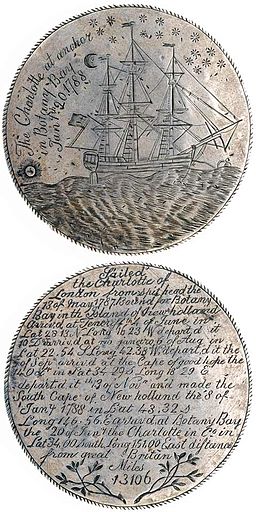
The Charlotte Medal is a piece of immense historical importance as it represents the earliest known work of art created in Colonial Australia. Engraved by Thomas Barrett, a convict aboard the First Fleet ship Charlotte, this silver disc marks the beginning of European settlement in Australia. The medal was engraved to commemorate the voyage of the First Fleet from England to Botany Bay, where the first penal colony was established. The craftsmanship, completed under difficult conditions, underscores the resilience and resourcefulness of the convicts. The medal’s engraving details the entire journey, providing a firsthand account of a pivotal moment in Australia’s history. Beyond its artistic value, the Charlotte Medal is a cultural artifact that symbolizes the harsh realities of early colonial life. It stands as a testament to the birth of modern Australia, encapsulating the struggles and triumphs of the first European settlers. Its acquisition by the Australian National Maritime Museum highlights its significance as a key historical object.
Lydian Stater (Sardis, c. 550 BC)
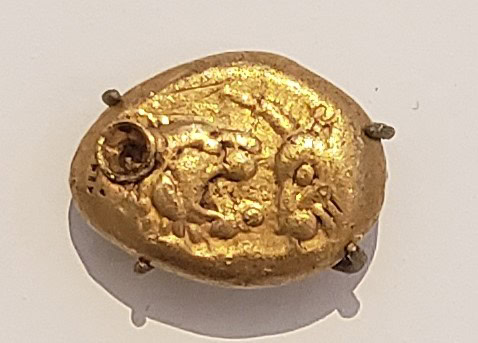
The Lydian Stater, minted under King Croesus, is often heralded as the first true coin, marking a revolutionary moment in the history of currency. Made from electrum, a naturally occurring alloy of gold and silver, the Lydian Stater introduced the concept of a standardized medium of exchange, which was crucial for the development of trade and economies in the ancient world. This innovation allowed for more reliable and widespread commerce, as the coin’s consistent weight and value eliminated the uncertainties of bartering and metal trading. The Stater also established a fixed ratio between gold and silver coins, a system that would influence monetary practices for centuries to come. The Lydian Stater’s impact extended far beyond the borders of Lydia; it set the stage for the widespread use of coinage throughout the Mediterranean and beyond. Its introduction signaled a new era in economic history, making it one of the most significant coins ever minted.
Athenian Tetradrachm (Greece, c. 455 BC)
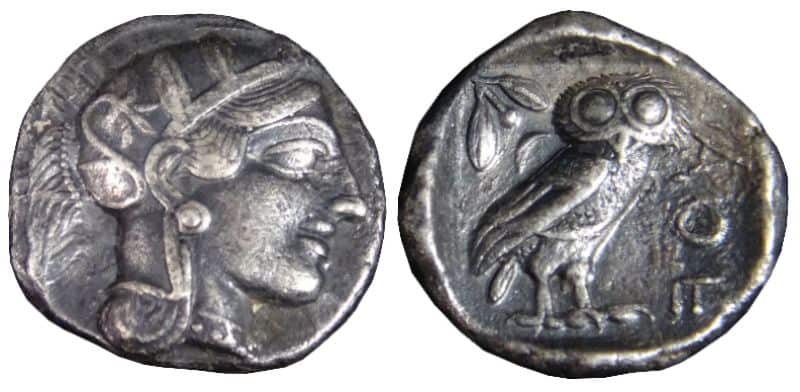
The Athenian Tetradrachm, famously adorned with the owl of Athena, became one of the most widely recognized and circulated coins of the ancient world. Minted during Athens’ golden age, this silver coin not only symbolized the city’s wealth and power but also its intellectual and cultural dominance. The coin featured Athena’s head on one side and her sacred owl on the other, reflecting the city’s patron goddess. The consistent weight and high silver content of the Tetradrachm made it a trusted medium of exchange across the Mediterranean, facilitating trade from the Black Sea to Egypt. Its widespread acceptance helped establish Athens as a major economic power and contributed to the city’s prosperity. The Athenian Tetradrachm’s influence extended beyond its monetary value; it became a cultural icon representing the values of wisdom and strength associated with Athena. The coin’s design remained largely unchanged for over two centuries, testifying to its enduring appeal and significance in the ancient world.
Alexander the Great Tetradrachm (Macedonia, c. 336-323 BC)
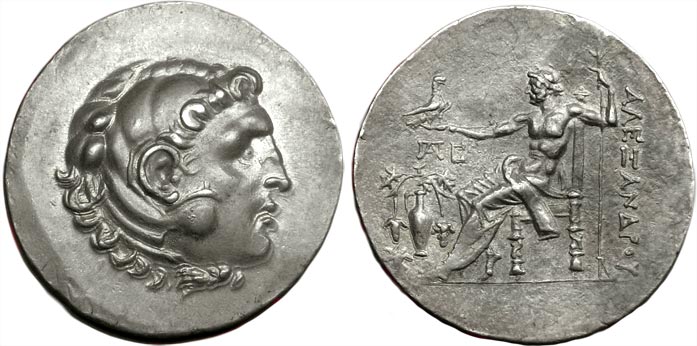
The Alexander the Great Tetradrachm is a coin of profound historical significance, reflecting the vast empire and enduring legacy of one of history’s most iconic leaders. Minted during and after Alexander’s conquests, these silver coins featured the image of Heracles (Hercules), symbolizing strength, and the god Zeus, representing authority and power. The widespread circulation of these coins across Alexander’s empire, from Greece to Egypt and India, facilitated trade and helped unify diverse cultures under a common economic system. Even after Alexander’s death, the coins continued to be minted in his name, a testament to the lasting influence of his reign. The Tetradrachm not only served as a medium of exchange but also as a tool of propaganda, spreading the image and ideals of Alexander across the known world. Its enduring presence in commerce and its role in promoting Alexander’s legacy make this coin one of the most significant in numismatic history.
Holey Dollar (Australia, 1813)
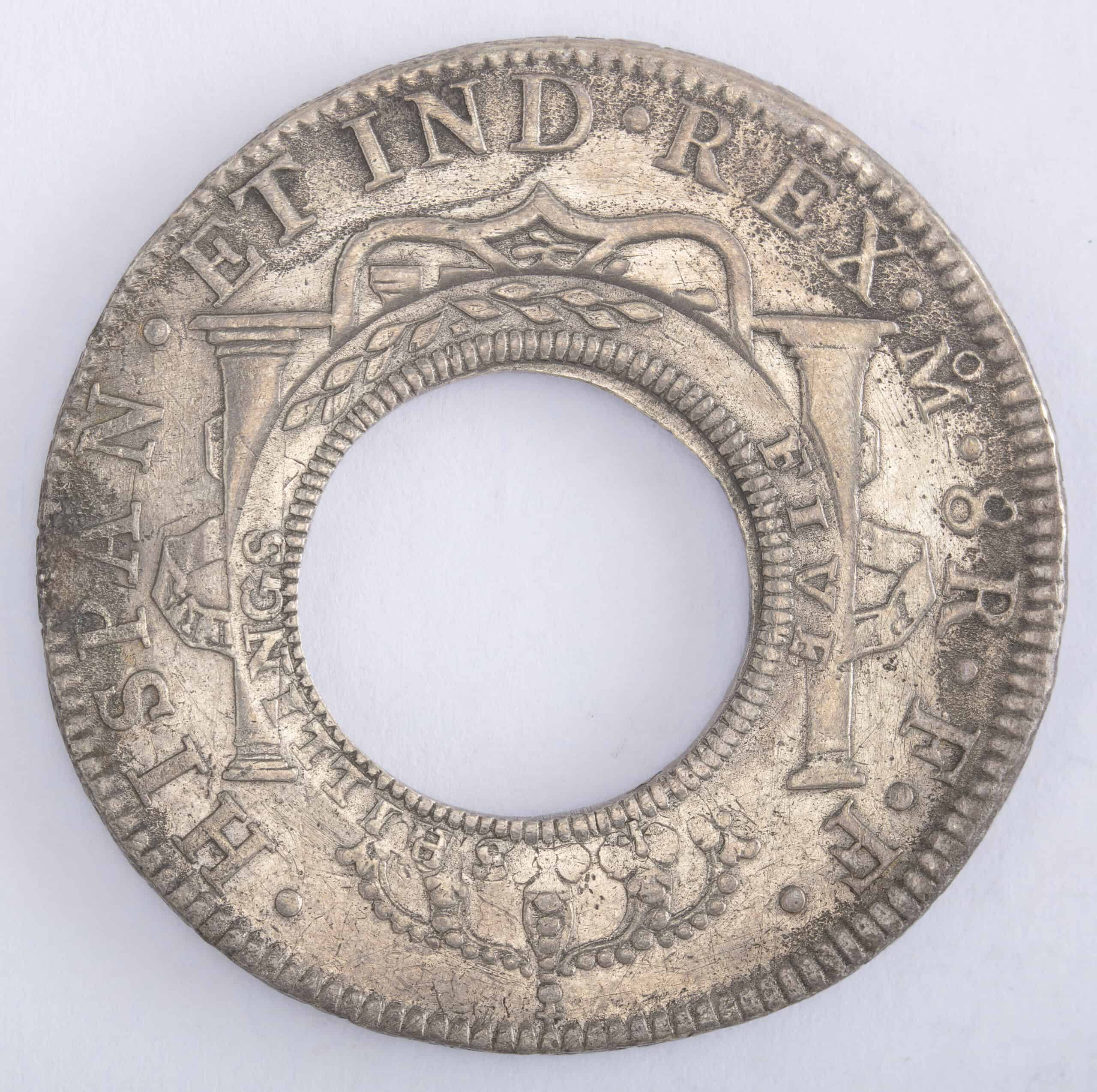
The Holey Dollar holds a unique place in the history of currency as an innovative solution to a coin shortage in the early Australian colony of New South Wales. Faced with a severe lack of currency, Governor Lachlan Macquarie implemented an ingenious plan: he ordered the center of Spanish dollars to be punched out, creating two coins from one. The outer ring, known as the Holey Dollar, was re-stamped with the words “New South Wales” and a value of five shillings, while the inner piece, called a “Dump,” was valued at fifteen pence. This creative approach not only doubled the available currency but also prevented the coins from being easily removed from the colony. The Holey Dollar is historically significant as it represents the resourcefulness of early Australian settlers and their efforts to establish a stable economy in challenging conditions. Today, it is one of the most valuable and sought-after pieces of Australian numismatic history, symbolizing the early struggles and ingenuity of the colony.
Caracalla’s Antoninianus (Rome, 215 AD)
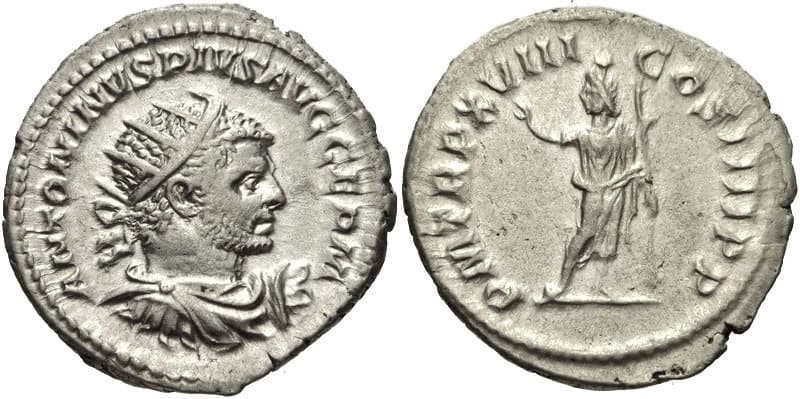
The Antoninianus, introduced by Emperor Caracalla, is emblematic of the economic struggles of the Roman Empire during the 3rd century. This coin, initially intended as a double denarius, weighed only 1.5 times that of a denarius and had a significantly lower silver content. The Antoninianus reflected the Empire’s increasing reliance on devalued currency to fund military expenses and other state functions. The reduction in silver content marked the beginning of widespread inflation and economic instability, which plagued the later Roman Empire. Caracalla’s coinage reform, including the introduction of the Antoninianus, is seen as a pivotal moment in Roman economic history, signaling the decline of the Roman currency system and contributing to the eventual fall of the Western Roman Empire. The Antoninianus is historically significant for what it represents: the challenges of maintaining a vast empire with dwindling resources and the long-term consequences of monetary devaluation.
Louis IX Gros Tournois (France, 1266)
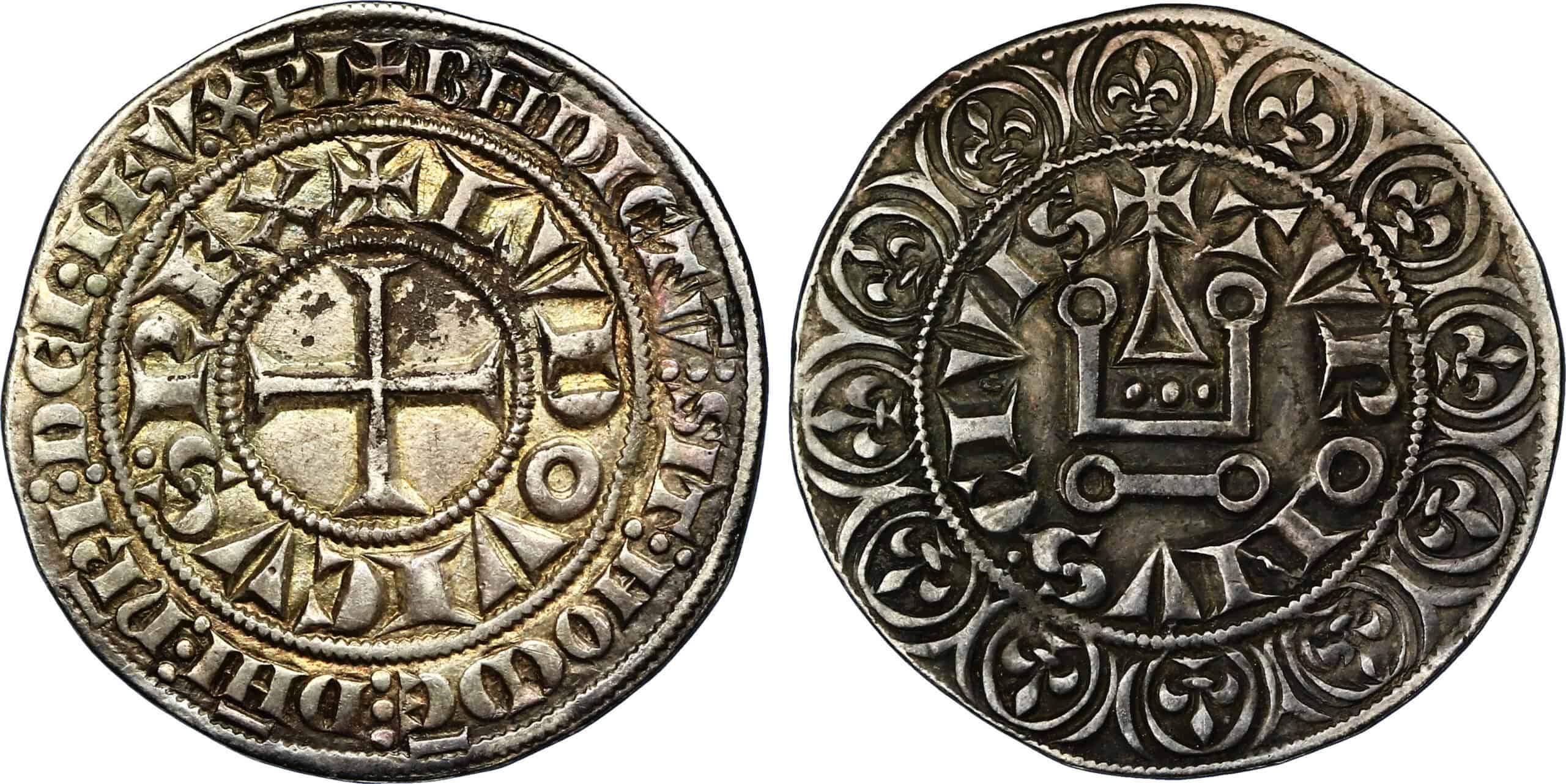
The Gros Tournois, introduced by King Louis IX of France, was a groundbreaking silver coin that became a cornerstone of medieval European trade. Minted to a weight of approximately 4.22 grams, it was worth 12 deniers, making it one of the first large silver coins of its kind. The Gros Tournois was widely accepted across France and beyond, due to its consistent silver content and reliable weight. Its introduction facilitated commerce on a larger scale, particularly in the burgeoning market towns and trade fairs of medieval Europe. The coin featured a cross on one side and the castle of Tournois on the other, symbolizing the strength and stability of the French monarchy. The Gros Tournois’ influence extended well beyond France, as its design and standards were adopted by other European states. It played a key role in the development of a more integrated European economy, making it one of the most significant coins of the Middle Ages.
Maria Theresa Thaler (Austria, 1740-1780)
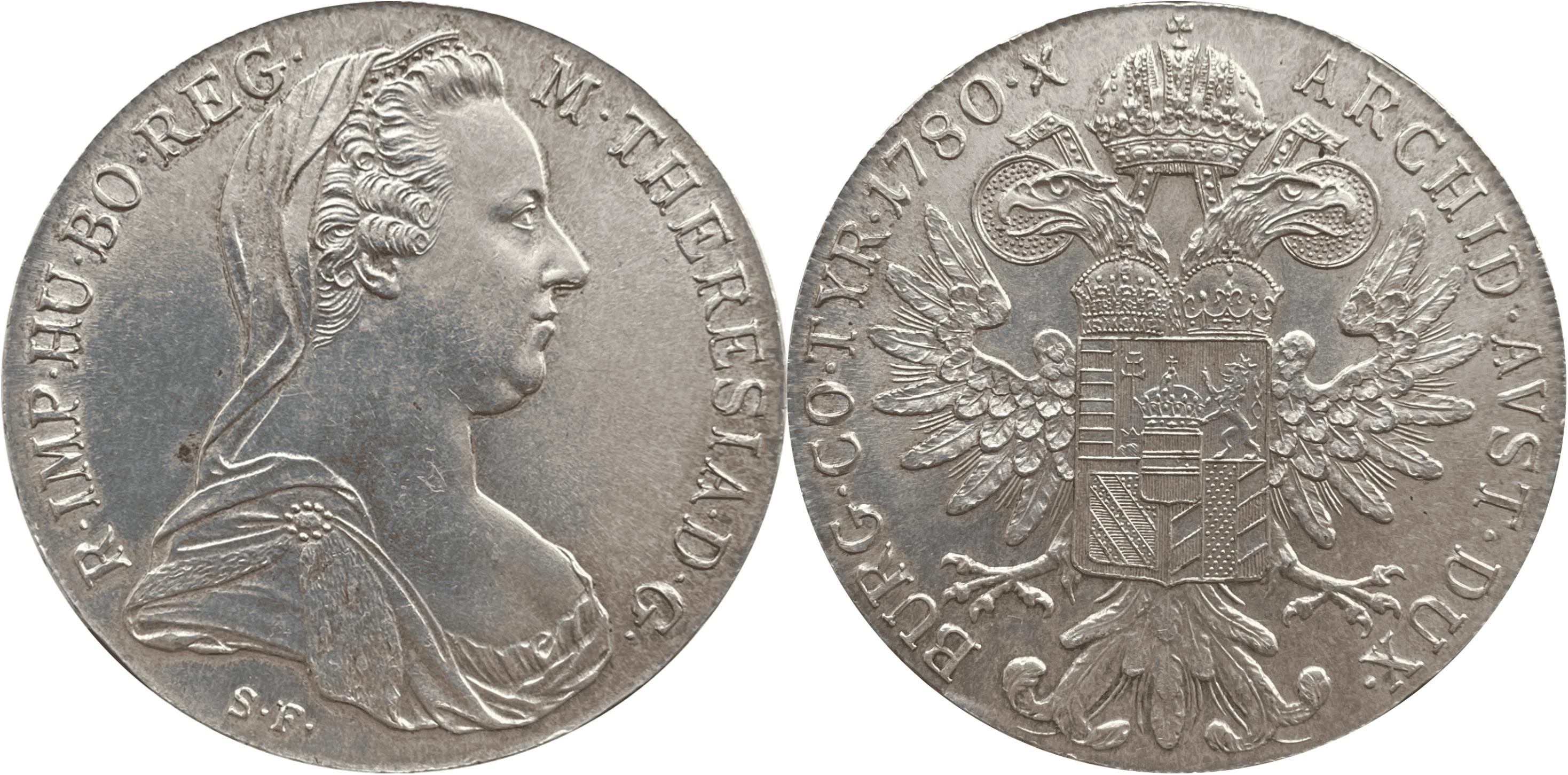
The Maria Theresa Thaler is one of the most iconic and widely circulated trade coins in history. First minted in 1741, this silver coin became the standard currency for trade in Europe, the Middle East, and Africa for over two centuries. Weighing approximately 28 grams, it featured a portrait of Empress Maria Theresa on the obverse and the Habsburg coat of arms on the reverse. The Thaler’s consistent weight and high silver content made it a trusted currency in international trade, and it continued to be minted posthumously with the 1780 date long after Maria Theresa’s death. The coin’s popularity was such that it became the de facto currency in regions far beyond the Habsburg Empire, including Ethiopia and the Arabian Peninsula. The Maria Theresa Thaler’s historical significance lies in its role as a global trade coin, symbolizing the economic reach and influence of the Habsburg dynasty and serving as a precursor to modern international currency standards.
Sigismund’s Guldiner (Austria, 1486)
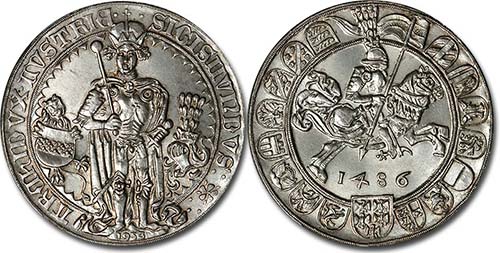
Sigismund’s Guldiner, minted in Tyrol in 1486, represents a significant development in European coinage as one of the first large silver coins comparable in value to gold. Weighing approximately 31.6 grams, the Guldiner was created during a period of silver abundance in Europe and was intended to replace smaller silver coins for larger transactions. The coin’s design featured Sigismund, Archduke of Austria, and the imperial eagle, symbolizing his authority. The Guldiner’s introduction marked the beginning of a shift towards larger denomination silver coins, which would eventually lead to the creation of the thaler, a direct ancestor of the modern dollar. The Guldiner’s impact on the evolution of European currency systems and its role in standardizing large silver coinage make it one of the most historically significant coins of the late Middle Ages.
Charles III Real de a Ocho (Spain, 1808)
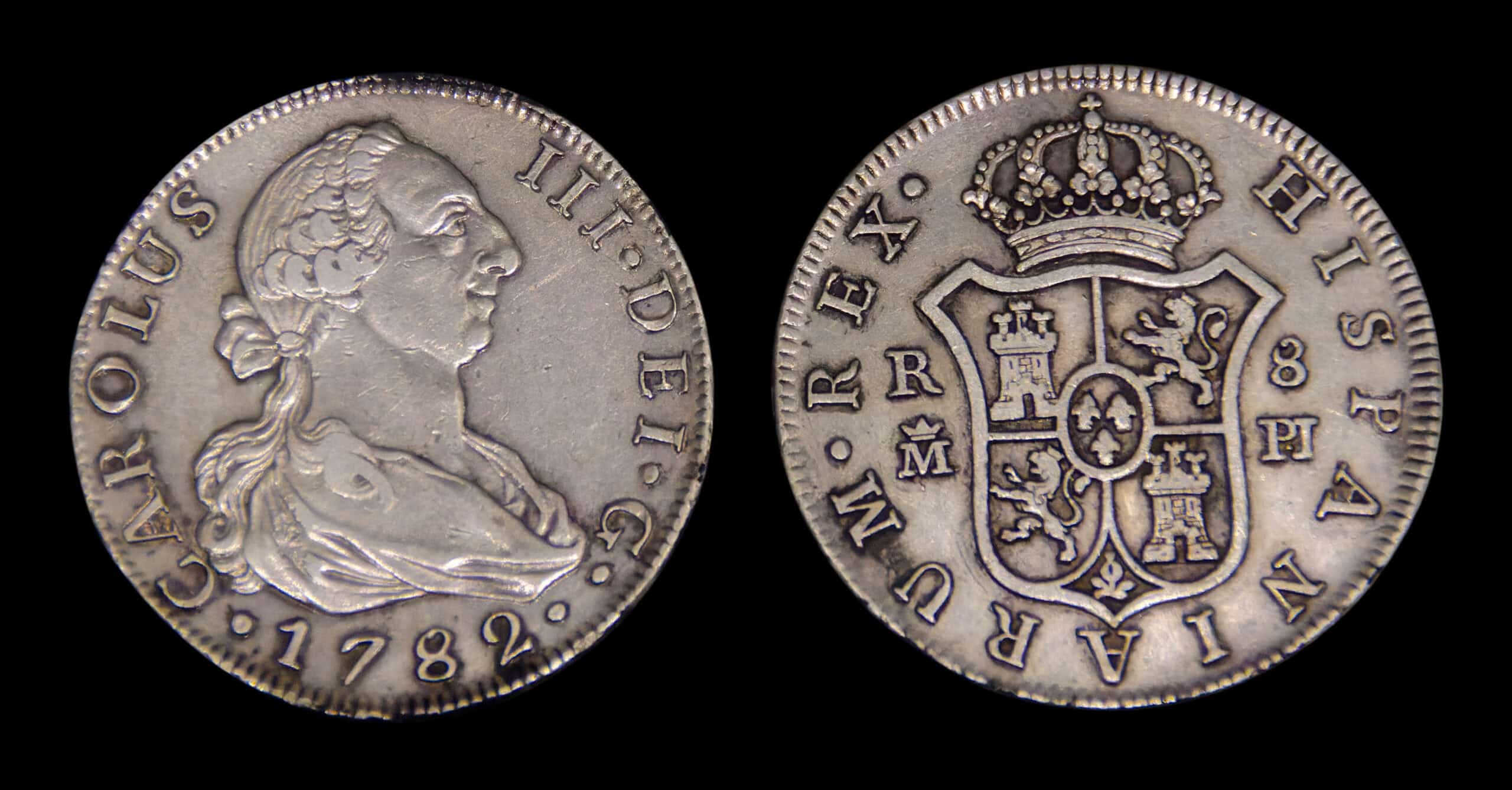
The Real de a Ocho, also known as the Spanish dollar or “Piece of Eight,” is one of the most influential coins in global history. Minted during the reign of Charles III and weighing approximately 27 grams, this silver coin became the world’s first truly global currency. It was widely used in international trade from Europe to the Americas and Asia, particularly in the Spanish colonies. The Real de a Ocho’s popularity stemmed from its reliable silver content and standardized weight, making it a trusted medium of exchange across different cultures and economies. The coin’s design featured the Pillars of Hercules, symbolizing Spain’s maritime power, and served as the basis for several modern currencies, including the U.S. dollar. The Real de a Ocho’s historical significance lies in its role as a cornerstone of global trade and its lasting influence on the world’s monetary systems.
Napoleon’s 5 Francs (France, 1803)
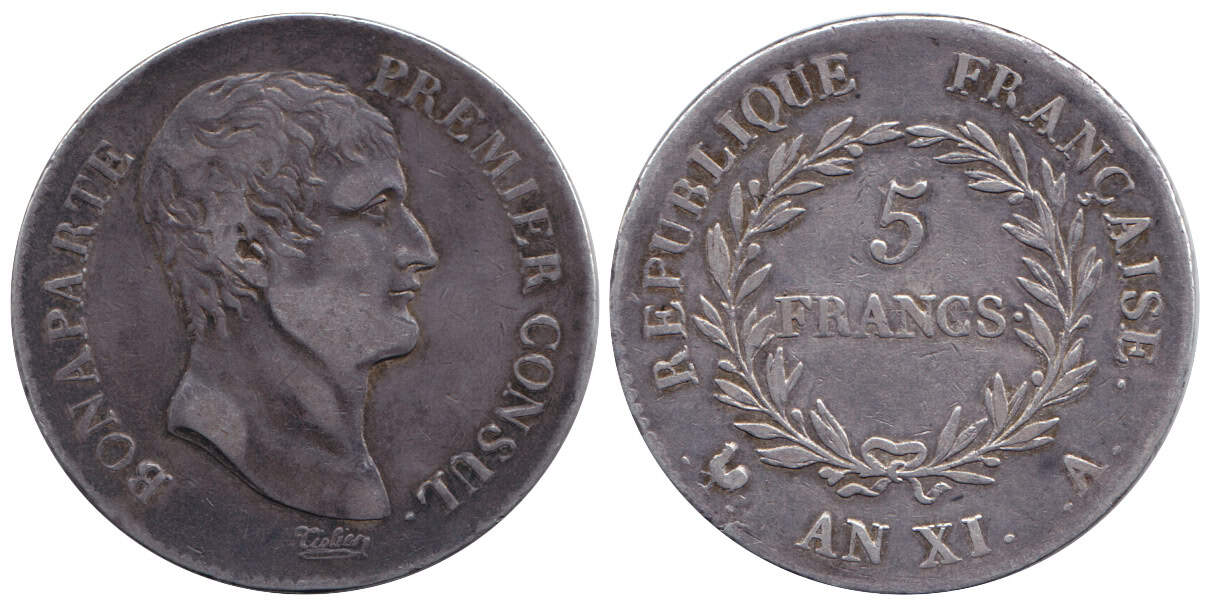
The 5 Francs coin, introduced during Napoleon Bonaparte’s rule as First Consul, played a crucial role in the standardization of the French monetary system. Minted from 1803 onwards, this silver coin weighed approximately 24.83 grams and became the foundation of the decimal currency system established under Napoleon. The coin featured a portrait of Napoleon on the obverse and the imperial eagle or the French Republic’s symbols on the reverse. The 5 Francs coin was widely circulated across France and its empire, symbolizing Napoleon’s control and the spread of his reforms throughout Europe. Its introduction marked a significant shift from the complex and inconsistent coinage of the Ancien Régime to a more uniform and modern monetary system. The 5 Francs coin’s influence extended beyond France, as its design and weight standard were adopted by several European countries, making it a key coin in the history of European currency.
George III Sovereign (UK, 1817)
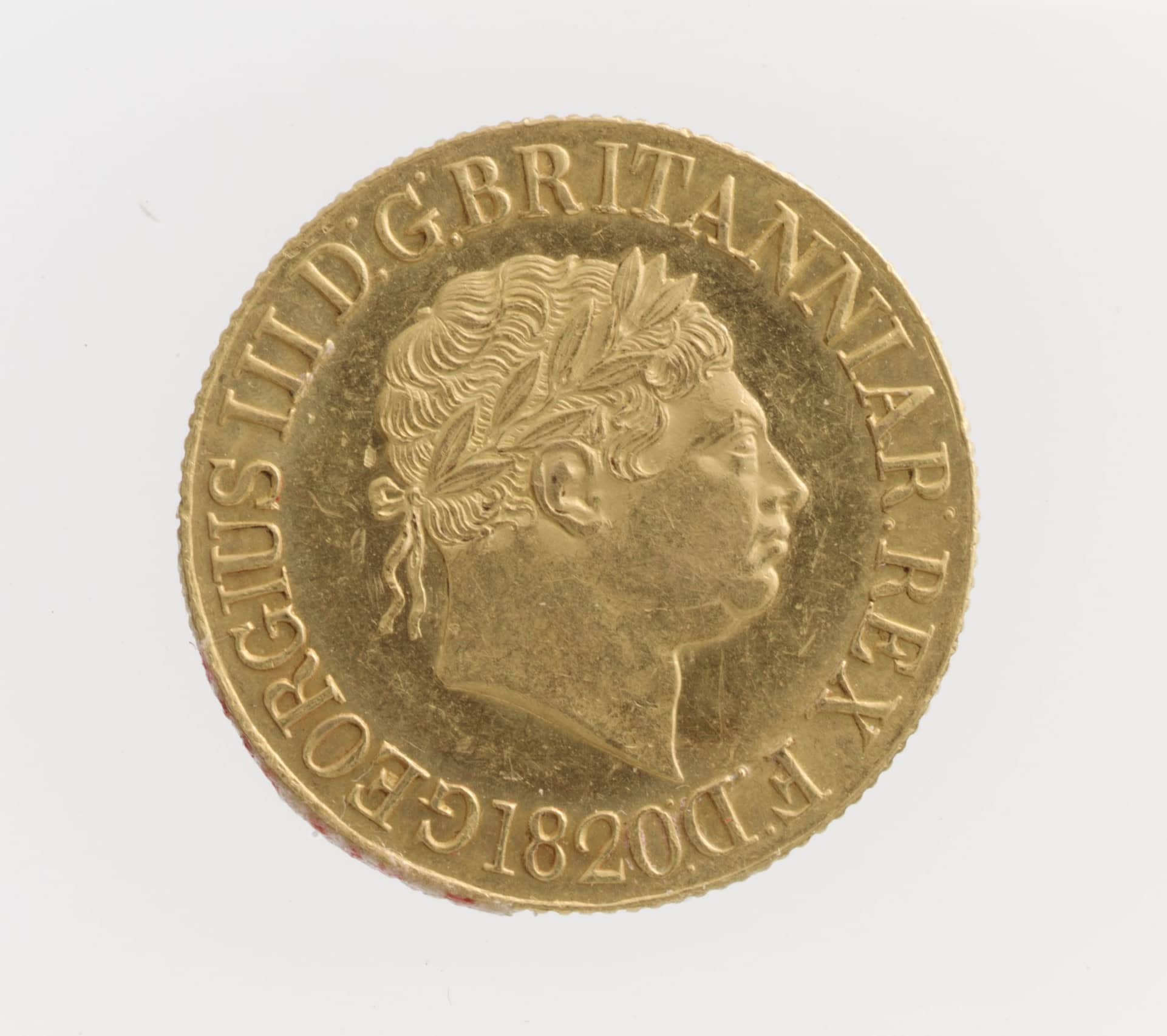
The George III Sovereign, introduced in 1817, became the cornerstone of the British gold standard and one of the most important coins in the history of the British Empire. Weighing approximately 7.98 grams of pure gold, the Sovereign was part of a broader reform of the British monetary system following the Napoleonic Wars. The coin featured a portrait of King George III on the obverse and the iconic image of St. George slaying the dragon on the reverse, symbolizing British power and victory. The Sovereign quickly gained acceptance as a stable and reliable currency, facilitating trade across the vast British Empire. Its consistency in weight and gold content made it a trusted medium of exchange, and it became the benchmark for other currencies around the world. The George III Sovereign’s role in establishing the gold standard and its widespread use in global trade highlight its historical significance as one of the most influential coins ever minted.
United States Silver Dollar (USA, 1794)
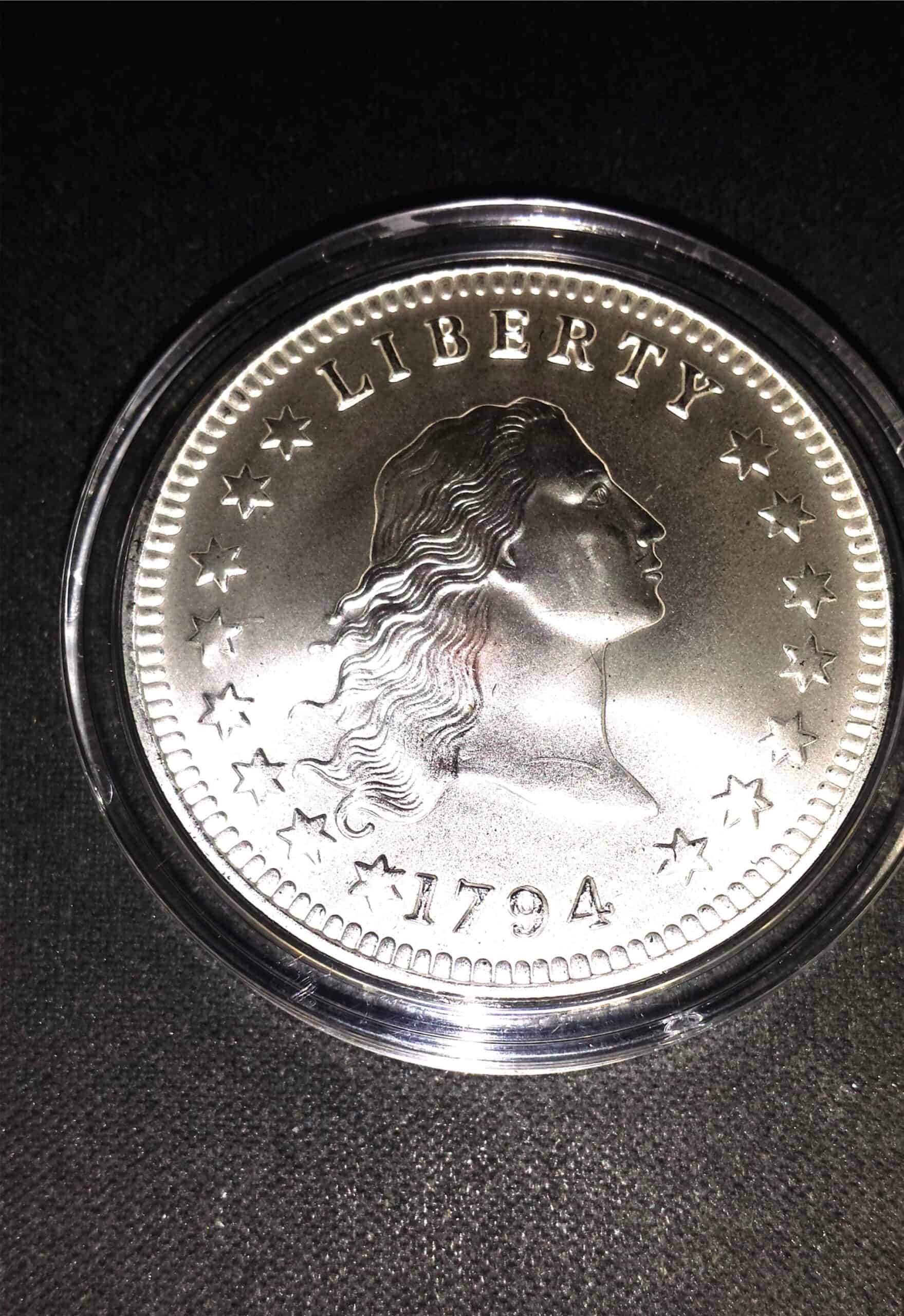
The United States Silver Dollar, first minted in 1794, marks the beginning of American coinage and the establishment of the U.S. monetary system. Weighing approximately 26.96 grams, this silver coin featured the portrait of Lady Liberty on the obverse and an eagle on the reverse, symbolizing the new nation’s ideals of freedom and independence. The 1794 Silver Dollar is historically significant as it represents the first dollar coin struck by the United States Mint, making it a cornerstone of American numismatic history. The coin’s introduction helped establish the U.S. dollar as the national currency and facilitated trade and economic growth in the young republic. The 1794 Silver Dollar is highly prized by collectors today, not only for its rarity but also for its historical importance as the first official currency of the United States.
United States Trade Dollar (USA, 1873-1878)
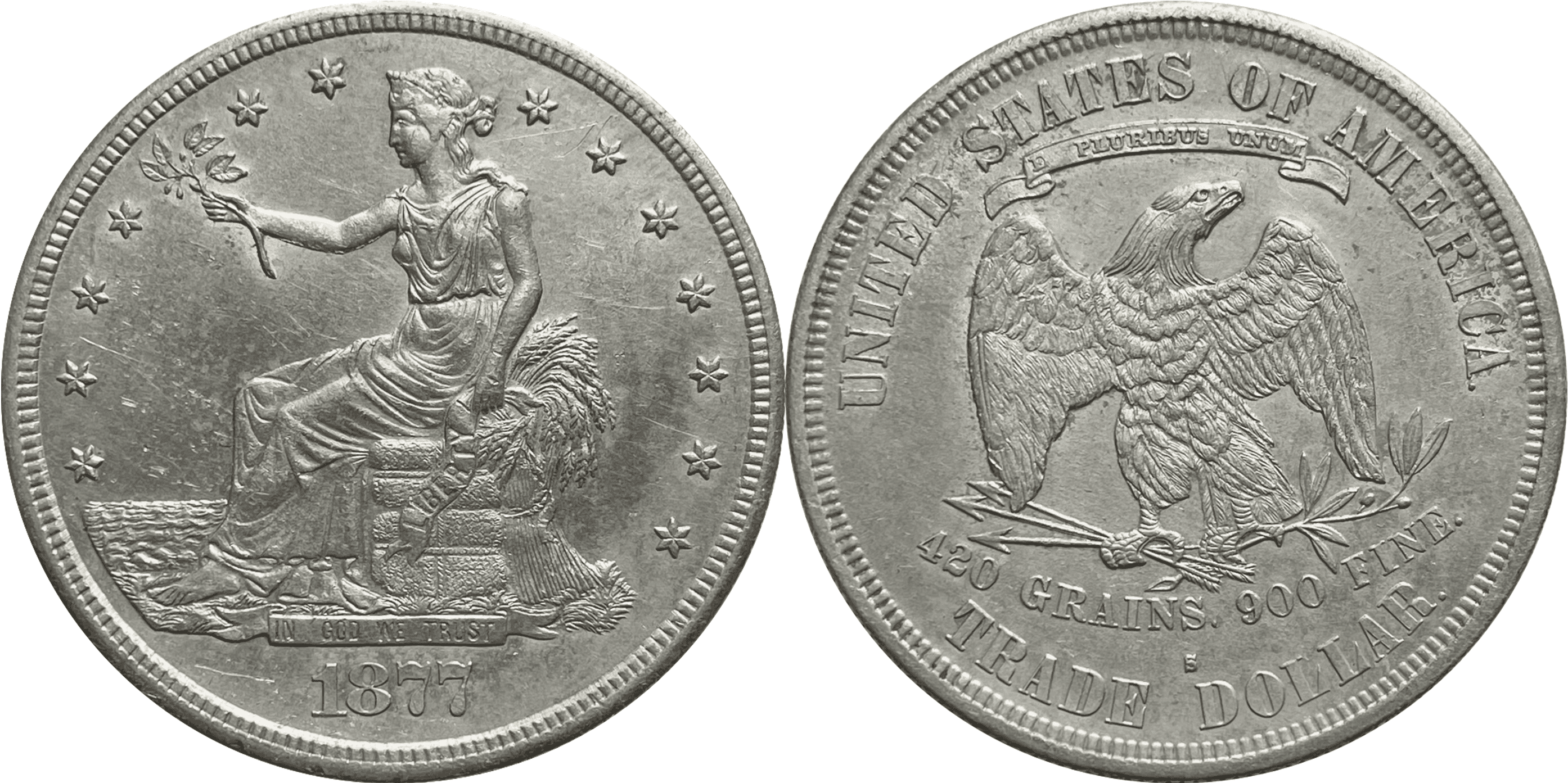
The United States Trade Dollar was introduced in 1873 as a silver coin intended for trade with Asia, particularly China. Weighing 27.2 grams, the coin featured a seated Lady Liberty on the obverse and an eagle on the reverse. The Trade Dollar was designed to compete with the widely circulated Mexican silver pesos and to establish a foothold for American currency in Asian markets. Although it was initially well-received, changes in U.S. silver policy and fluctuating silver prices led to its withdrawal from circulation in 1878. Despite its short lifespan, the Trade Dollar played a significant role in expanding U.S. influence in global trade and demonstrated the country’s growing economic ambitions. The coin’s historical significance lies in its role as a symbol of America’s entry into international commerce and its impact on the global monetary landscape during the late 19th century.
United States Morgan Dollar (USA, 1886)
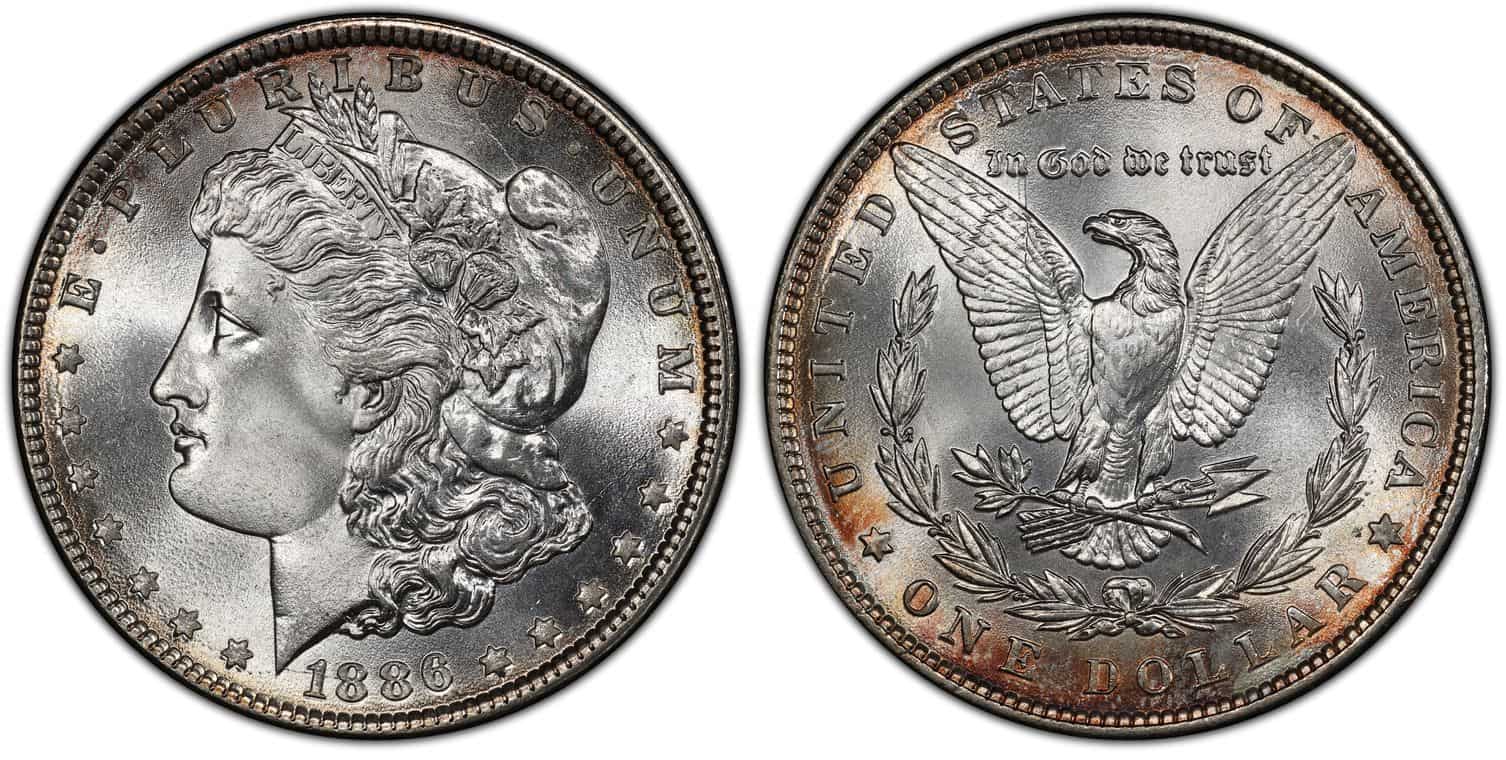
The Morgan Dollar, first minted in 1878, is one of the most iconic coins in American history, symbolizing the economic recovery of the United States following the Civil War. Designed by George T. Morgan, the coin features a profile of Lady Liberty on the obverse and a bald eagle with outstretched wings on the reverse. Weighing 26.73 grams and composed of 90% silver, the Morgan Dollar was minted in large quantities during the late 19th and early 20th centuries. It became a symbol of American prosperity and industrial growth during the Gilded Age. The coin’s widespread use in everyday transactions and its enduring popularity among collectors today highlight its significance in American numismatic history. The Morgan Dollar’s historical importance lies in its representation of America’s emergence as a global economic power and its role in the country’s monetary history.
This article originally appeared on Rarest.org.
More from Rarest.org
The night sky has always been a source of wonder and mystery, offering more than just the stars and the moon. Beyond the usual celestial sights, there are rare and unusual phenomena that can take your breath away. Read more.
Efforts to protect marine life have led to remarkable comebacks for several species once on the brink of extinction. Read more.



